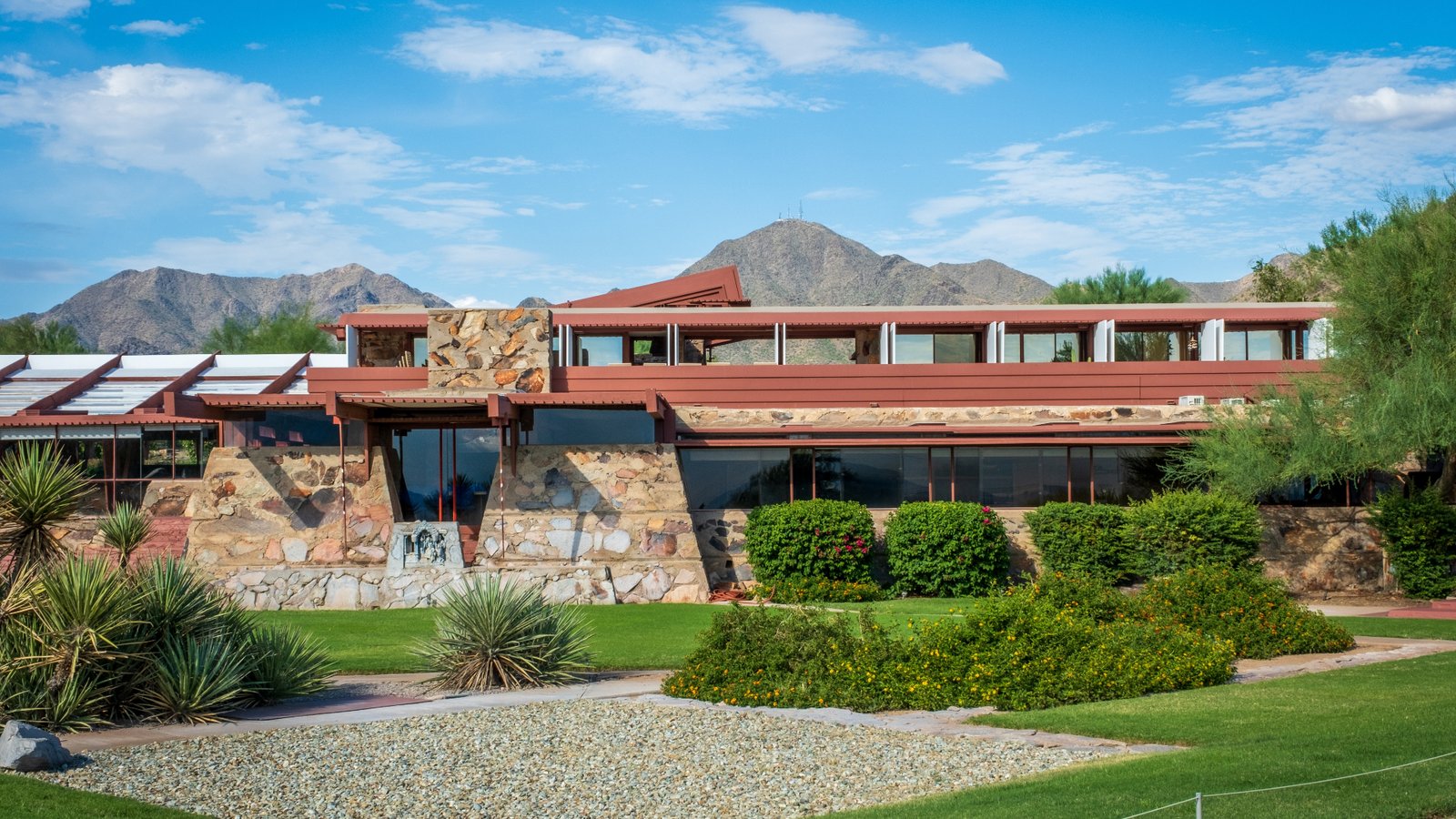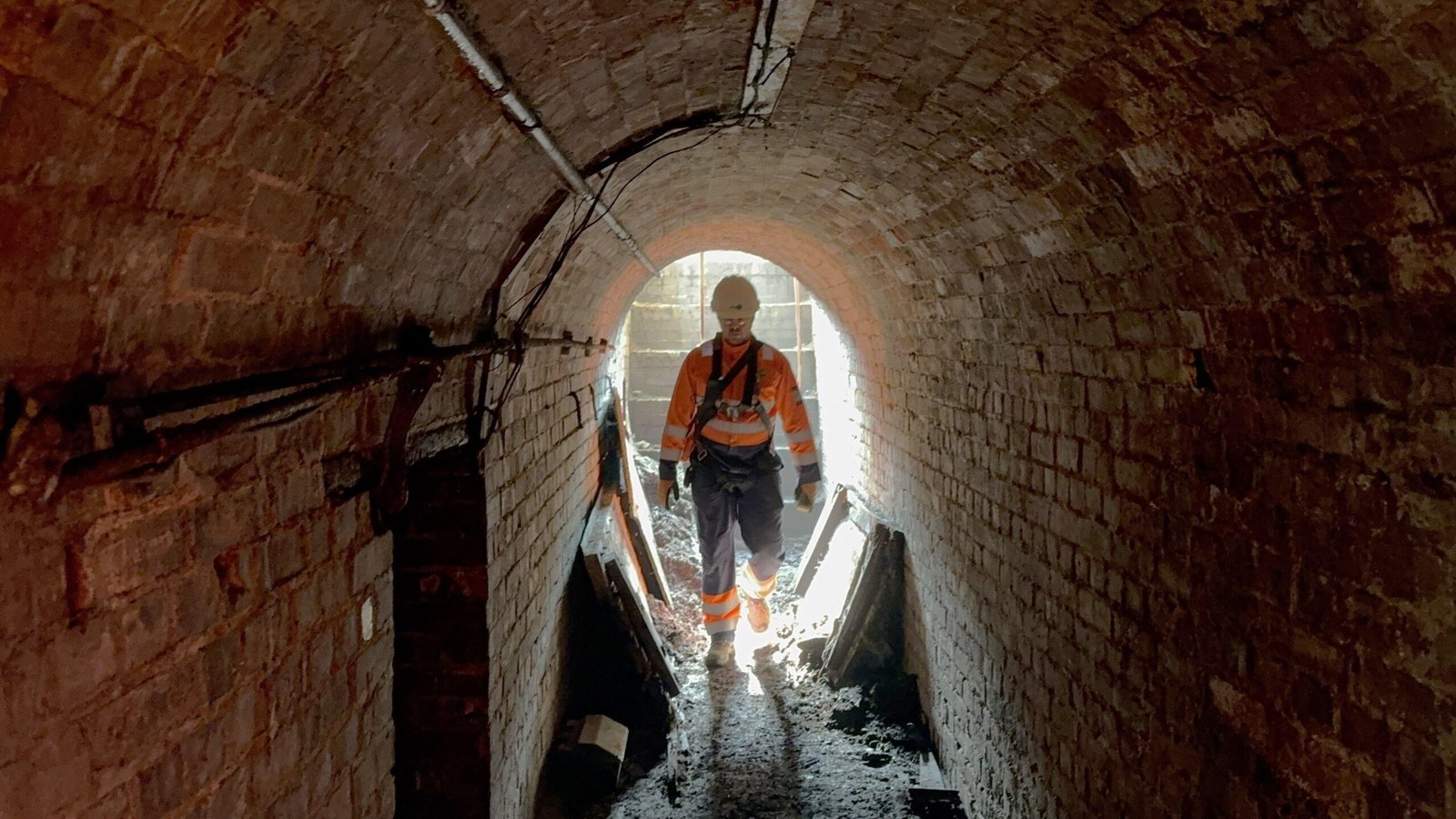
Desert Masterpiece: Frank Lloyd Wright’s Arizona Villa—His Architectural Marvel and Winter Haven
Nestled in the McDowell Mountains of Scottsdale, Arizona, Taliesin West served as both Frank Lloyd Wright’s winter retreat and an architectural learning center. This structure embodies Wright’s philosophy of organic architecture through its seamless integration with the natural environment. Built under Wright’s guidance along with contributions from his students from 1937 up until his death in 1959, the building exemplifies how architecture can harmoniously coexist with nature.
One of the most notable features of
Taliesin West
This unique approach, known as ‘desert masonry,’ employs local stones and desert aggregates combined with concrete to form the structure’s rugged, uneven walls. Designed to blend seamlessly into the surroundings, these walls serve a vital function in managing the harsh conditions of the desert environment.
One of the most notable characteristics is the incorporation of canvas roofs. Originally crafted from canvas and subsequently substituted with sturdier alternatives, these semi-transparent sections enable filtered sunlight to filter through into the interior spaces, resulting in a gentle, natural lighting effect. The canvas, which is pulled taut across redwood structures, imparts an open, breezy ambiance that stands out against the robustness of the stone walls. This play between light and material recurs consistently throughout the structure.
Are you fond of architecture? These articles might pique your curiosity:
- In Paris, enter an apartment created by Le Corbusier and delve into the architect’s universe.
- Brazilian architect Oscar Niemeyer’s 7 most breathtaking creations to explore globally
- Within the Japanese Alps, these settlements maintain a distinctive architectural style.
In each space, nature and design merge seamlessly.
The Garden Room serves as a central meeting area and embodies
Wright’s vision
The design emphasizes the connection between indoor and outdoor areas. Large glass windows extend outwards to a terrace, merging the boundaries between external and internal environments. Characteristic sharp angles found in Wright’s subsequent projects are highlighted with built-in benches and hearths made using local stone construction techniques.
Close by, the Drafting Studio stands as a center for creativity and instruction, keeping its authentic drafting tables and instruments intact. Ample sunlight pours into this area via big windows, offering an ideal setting for developing fresh architectural designs. The design of the studio intentionally fosters teamwork and communication, mirroring Wright’s educational philosophy.
Moreover, the Cabaret Theatre, a compact and cozy venue for performances, exemplifies the fusion of sound technology with architectural aesthetics. The distinctive angular layout of both the seats and the stage embodies Frank Lloyd Wright’s vision for immersive spaces. Adjacent to this is the open-air Music Pavilion, which utilizes the inherent acoustic properties of the nearby terrain. Here, the stepped seating, crafted using the same local stone material as elsewhere in the complex, offers breathtaking views across the desert landscape.
Preservation and legacy
Today, Taliesin West functions as the main headquarters.
Frank Lloyd Wright Foundation
And the architecture school at Taliesin continues to undergo ongoing preservation efforts, ensuring the site remains intact for visitors to enjoy.
experience Wright’s architectural vision
Initially. The website persistently inspires architects and design aficionados globally, functioning as a dynamic showcase of organic architecture.
Share this content:





















Post Comment